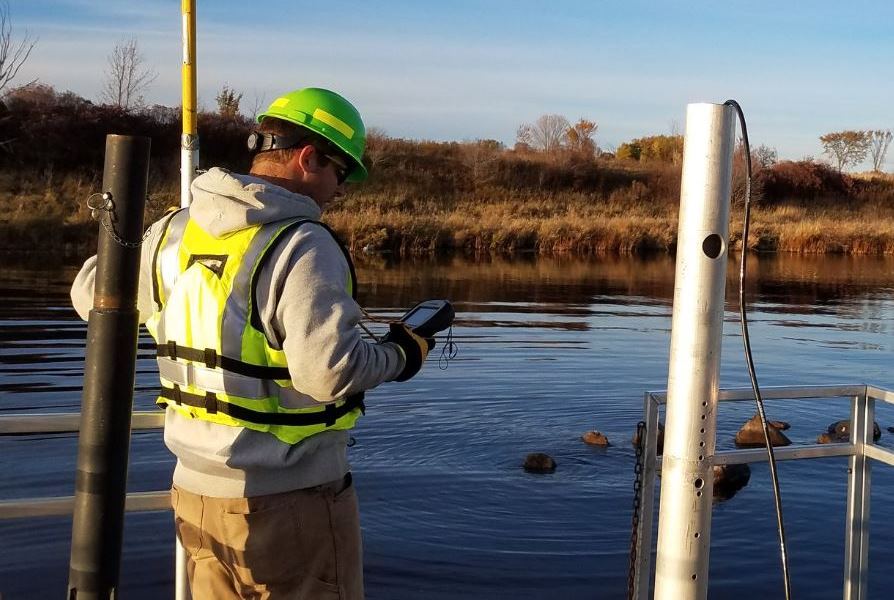On October 21, 2021, New York State Department of Environmental Conservation (DEC) Commissioner Basil Seggos announced the first of two major milestones in the restoration and remediation of the heavily contaminated (mostly by the Alcoa Aluminum company, now called Arconic).
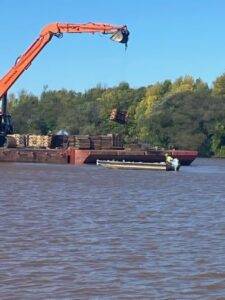 The Grasse River restoration project has hit a habitat restoration milestone as the result of a landmark DEC agreement (PDF) with Arconic in July 2020, and DEC’s ongoing collaboration with the Saint Regis Mohawk Tribe, New York State Museum, and other partners committed to the Grasse River’s ecological renewal.
The Grasse River restoration project has hit a habitat restoration milestone as the result of a landmark DEC agreement (PDF) with Arconic in July 2020, and DEC’s ongoing collaboration with the Saint Regis Mohawk Tribe, New York State Museum, and other partners committed to the Grasse River’s ecological renewal.
This work was completed in conjunction with the U.S. Environmental Protection Agency-led cleanup of the Grasse River, a federal National Priorities List (Superfund) site.
“Thanks to DEC’s innovative strategies to protect river habitat and our aggressive and sustained efforts to hold parties responsible for harmful contamination, hundreds of thousands of freshwater mussels and the Grasse River ecosystems that depend on them will thrive once again,” Commissioner Seggos said.
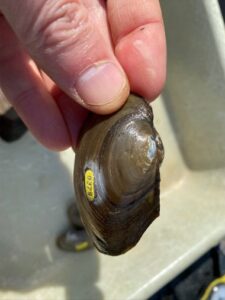 “The Grasse River provides habitat not only for the mussels, but also this area’s renowned bass, walleye, and muskie populations. We couldn’t have done this without the help of our partners from the Saint Regis Mohawk Tribe and New York State Museum,” he added.
“The Grasse River provides habitat not only for the mussels, but also this area’s renowned bass, walleye, and muskie populations. We couldn’t have done this without the help of our partners from the Saint Regis Mohawk Tribe and New York State Museum,” he added.
The Saint Regis Mohawk Tribal Council said, “As human beings, we are dependent on creation for our survival. As sophisticated as we think we are, the smallest creatures can accomplish great feats, such as providing clean water simply by following their original instructions. We are always grateful for them and those that take action in acknowledging their important purpose.”
Back in December 2019, DEC and the Saint Regis Mohawk Tribe signed a historic cooperative agreement to accelerate the restoration of natural resources in the St. Lawrence River Area of Concern (AOC) at Massena/Akwesasne, which includes the Grasse River.
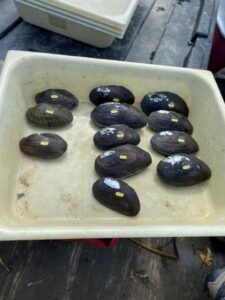 As cleanup efforts began along the river, approximately 80 percent of the freshwater mussel community was determined to be at risk of destruction due to their inability to escape the work sites and the organism’s slow reproductive rate.
As cleanup efforts began along the river, approximately 80 percent of the freshwater mussel community was determined to be at risk of destruction due to their inability to escape the work sites and the organism’s slow reproductive rate.
The Grasse River’s freshwater mussel community is remarkable for its density and diversity; at least 15 different species have been found here. The mussels perform the critical functions of nutrient cycling, sediment structure, and forage base.
DEC worked closely with the Saint Regis Mohawk Tribe and the New York State Museum to make this initiative successful. When DEC launched the inaugural Stewardship Appreciation Awards last year, the Grasse River Restoration Partners received the Innovation Award for work on this project.
The restoration included:
- Moving nearly 500,000 freshwater mussels that would have been killed during the Grasse River cleanup. The relocated mussels are expected to help the remaining mussels recover and nearly doubled the population expected to survive;
- As required by DEC, Arconic installed 400 innovative “crib” structures to provide habitat diversity for fish until their natural habitat returns. The fish crib structures are made with cleaned, leftover construction materials, reducing the need for new materials;
- Improving the three largest freshwater wetland areas along the river by placing high quality soils, stabilizing areas of erosion, and planting native species. These efforts to restore the wetland will provide habitat for waterfowl, reptiles, and amphibians along the river; and
- Areas of upgraded habitat material are now providing a greater diversity of habitat for recovery of benthic invertebrates, an important food source for fish.
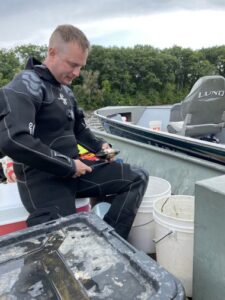 DEC will continue to oversee these projects as the river recovers to ensure the habitat recovers as expected. Additionally, DEC expects to oversee an effort to return the recovered mussels to remediated areas, possibly as early as 2022.
DEC will continue to oversee these projects as the river recovers to ensure the habitat recovers as expected. Additionally, DEC expects to oversee an effort to return the recovered mussels to remediated areas, possibly as early as 2022.
The Alcoa Massena-West Plant is an aluminum production plant on the north shore of the lower Grasse River. In the 1950s, Alcoa began using and discharging polychlorinated biphenyls (PCBs) through outfalls to the Grasse River, contaminating water and sediment. The cleanup selected by U.S. EPA for the Grasse River began in 2019, and includes dredging and backfilling approximately four miles of shallow water habitat and capping approximately 6.5 miles of deep-water habitat with clean material.
A few weeks after that October 21 announcement—on November 18, 2021—the U.S. Environmental Protection Agency announced that dredging and capping work had been completed at the Grasse River Superfund site (aka Alcoa Aggregation) in Massena, New York.
Nearly a quarter million cubic yards of sediment contaminated with polychlorinated biphenyls (PCBs) have been removed from the Grasse River and over 200 acres of river bottom have been capped.
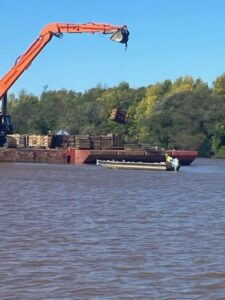 “This is an important milestone at the Grasse River Superfund site,” said Acting EPA Regional Administrator Walter Mugdan.
“This is an important milestone at the Grasse River Superfund site,” said Acting EPA Regional Administrator Walter Mugdan.
“We have removed forever about 220,000 cubic yards of PCB-contaminated sediment, which will allow for the recovery of this vital and culturally important river system. This success could not have been achieved without the work of our partners, the Saint Regis Mohawk Tribe and New York State,” he added.
EPA selected a cleanup plan for the site in 2013 that called for removing contaminated sediment from near-shore areas in a 7.2-mile stretch of the lower Grasse River and placing a cap on the river bottom in the main channel. Capping material included sand and powdered carbon, which works to capture and chemically bind pollutants in place, as well as some stone and gravel.
Additional dredging of contaminated sediment was added to the project in 2020 in the Snug Harbor area, which is a small embayment located on the north shore of the river, to accommodate a new, larger tugboat purchased by the St. Lawrence Seaway Development Corporation, which operates its tugboat out of Snug Harbor.
The dredging and capping work began in 2019 and was completed this fall. During the cleanup, contaminated soil was also removed from two areas along the north shore of the river near the Alcoa Bridge in Massena.
Dredging and capping equipment has been removed from the river and from two shoreline support areas located on Route 131 and Haverstock Road. The Haverstock Road Staging Area, which was used for storing capping material, has been fully restored. The Route 131 Staging Area will continue to be used for river monitoring activities for the next few years.
Work to reconstruct habitat areas impacted by the project will continue in 2022. The project’s long-term monitoring plan requires fish, water and habitat monitoring to track the recovery of the river over time. The fish consumption advisories established by the New York State Department of Health will remain in effect until PCB concentrations in fish are reduced to the point where the advisories are relaxed or lifted by the state. Capped areas of the river bottom will also be monitored to ensure that the caps placed on the river bottom remain intact.
Arconic (formerly Alcoa, Inc.) is conducting the cleanup and the associated monitoring and habitat restoration work under a 1989 administrative order with EPA.
This fall, EPA also initiated a five-year review of the cleanup that has been conducted so far at the site. The purpose of this review, which is legally required under the Superfund law within five years after the start of on-site construction, is to ensure that the cleanup is working as intended and is protective of public health and the environment. In conducting the review, EPA is reviewing Superfund site operation, maintenance and monitoring information.
Photos courtesy of New York State Department of Environmental Conservation.

